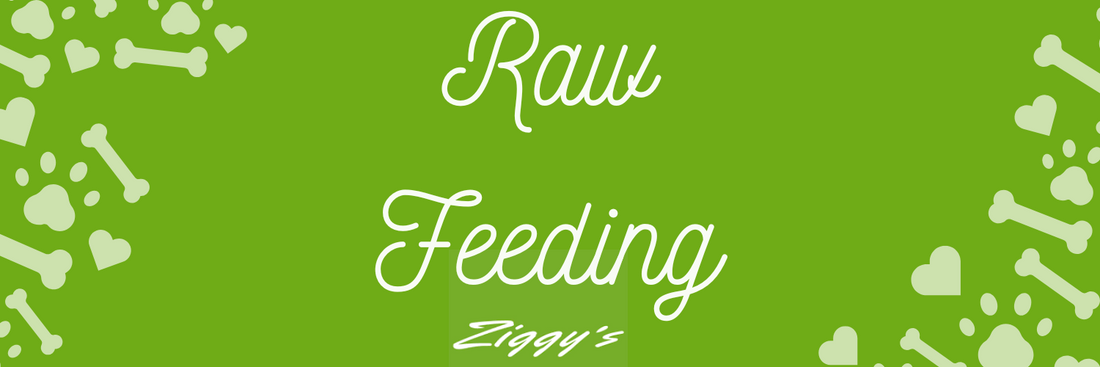
At Ziggys, we are huge fans of a raw food diet for your pets. In fact, it's one of the main reasons that Ziggys exists! Our founding Holistic Vet noticed a correlation between poor diet and illness and wanted to open a shop where pet owners were able to access quality nutrition and improve their pet's well being.
Transitioning your cat to a raw diet can be a great way to provide them with a natural and balanced diet that meets their specific nutritional needs. A raw food diet closely mimics the ancestral diet of your cat, and provides food in a biologically available form. Cats are obligate carnivores, which means that they require a diet that is high in protein and fat, and low in carbohydrates.
It's important to remember that cats have evolved as hunters, and therefore can be 'fussy' when it comes to food - this is a highly developed strategy to ensure they protect their own health. It can mean that cats are especially sensitive to changes in taste, texture and temperature.
You may notice some people referring to a raw food diet as a BARF diet - BARF refers to biologically appropriate raw food.
Raw food is a natural and holistic way to feed your cat, it ensures your cat is fed a diet full of high quality proteins and appropriate nutrients.
Here are our top tips for successfully transitioning your cat to a raw food diet:
-
We advise starting with a pre-made raw. Raw food needs a specific balance of nutrients to be effective, and the easiest way to make sure this is going to happen is by using a quality pre-made raw. At Ziggys, our range of raw food is carefully chosen based on quality and ingredients. As obligate carnivores, cats needs specific nutrients from their protein sources and you can trust the brands we stock to provide these nutrients.
-
Consider your routine. Raw feeding is a little more complicated than simply opening a bag or can and you need to get in to the routine of placing the food in the fridge the night before so that it's defrosted and ready to use the next day. I find setting a repeating alarm on my phone really helps me remember!
-
Most cats will be able to handle a straight swap to raw food. We advise starting with breakfast, this means you're more likely to be around if the raw food does cause a stomach upset for your cat. We advise leaving 12 hours between dinner the previous night, and the raw food breakfast. Some cats may need a little more encouragement. If this is the case you can use the one bowl method Take your cat’s existing old food and mix in a small percentage of the Raw cat food. We recommend you start with 10%. Slowly increase this over 2 weeks until you have made a full transition. You may need to gently adjust this to a point where your cat will eat the food. It’s best to avoid increasing too quickly with this method or you can use the two bowl method Place 90% or thereabouts of what you would normally feed your cat in one bowl. In a second bowl, place 10% of your new raw cat food. Adjust the amounts daily as your cat adapts.
- Cats have evolved as hunters - which means the temperature of their food is very important. If the food is too cold, cats may reject the meal as they may believe the meat has been lying around for too long and is no longer safe. For this reason, we advise feeding your cat's food at room temperature. You can also pour some warm Bone Broth over their meal to make it highly appealing.
-
Stick with one protein for 7 - 10 days so that you can monitor the effects on your cat.
-
You may want to use a probiotic alongside the transition. Your cat's gut is dealing with a very different type of food, and you may notice a temporary upset in the first few days. Using a probiotic is a great way to safe guard against this. We really like Nutrabio from Nutravet or Alexanders Naturals Bone Broth and Kefir Paws for this.
-
Supplements are a fantastic addition to a raw food diet. Our favourites are Pet Plus and Keepers Mix.
- Use a shallow bowl. As hunters, cats like to be able to see around them when eating. Cats also don't like it when their whiskers touch the sides of their bowls.
- Clean the bowl in-between meals. Cats are very sensitive to food which has spoiled and will reject their meal if they think it's gone bad. Cleaning the bowl between meals is a good way to prevent your cat rejecting their dinner.
-
You should aim to feed between 2 - 3% of your cat's weight daily (for adult cats). This may vary slightly for very active cats, or cats who need to lose a little weight. We have weighing scales at Ziggys and we are happy to help you work out how much you should be feeding per day.
-
Practice good food hygiene. There are no extra food risks than with meat for your own dinner. Wash your hands, surfaces and utensils as you would after handling raw meat and you'll be absolutely fine.


